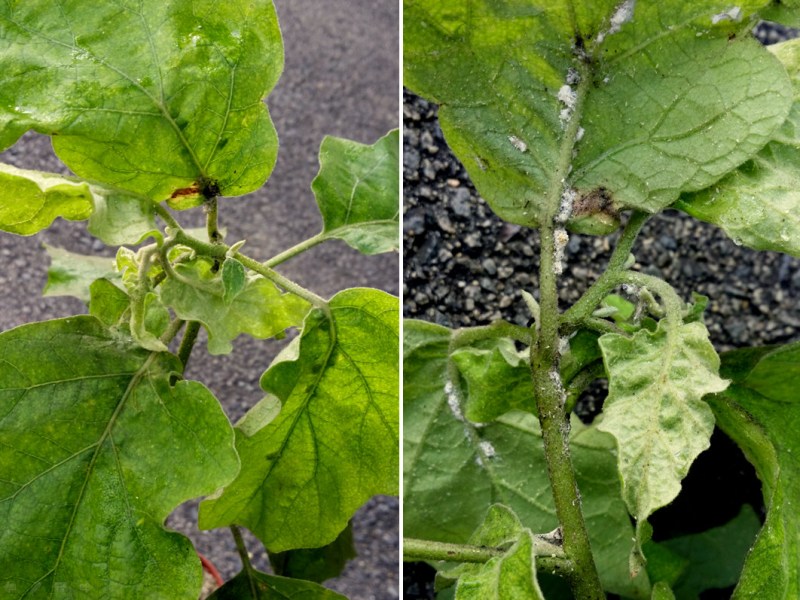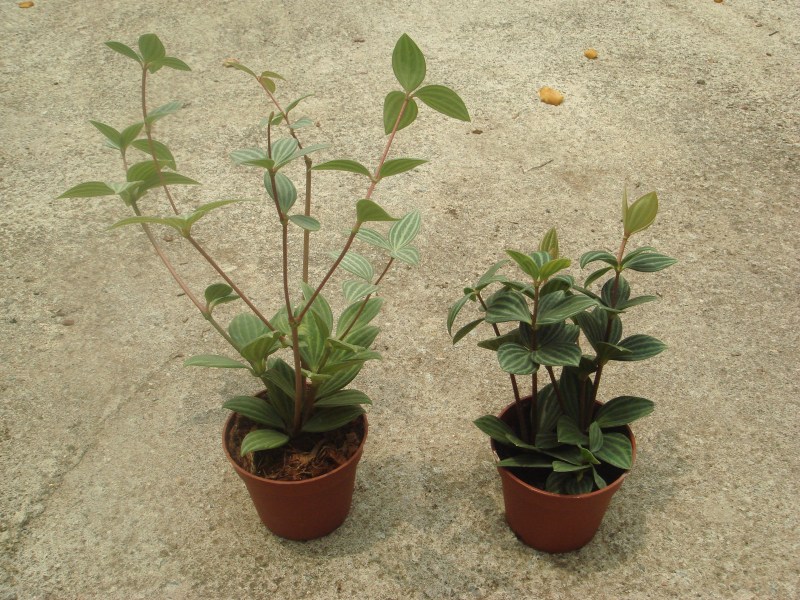Selecting A Healthy Plant For A Good Start To The New Year
With the festive season round the corner, many of us would be shopping for plants to decorate our homes and usher in the New Year.
Besides noting the price tag and selecting your favoured species, it is important to spend some time examining a plant to ensure you pick one that is free from pests and diseases, growing healthily and has the desired growth form. This is especially important if you wish to see your plant continue growing beyond the festive season!
Choosing a healthy plant will also ensure that you do not bring trouble home, as pests and diseases can spread from the new plant to those already in the house.
Check above the soil – Pests
Good plants should have well-shaped leaves that are typical of the species. All aerial parts of the plant should be free of pests and disease.
Give the plant a quick shake – a plant with an established root system will not wobble in its pot. Damage brought about by chewing pests like snails and grasshoppers would be obvious, appearing as large irregular-shaped holes in the leaves. It may not be easy to spot these pests as they move from plant to plant or they go into hiding.
Remember to check the underside of leaves as some pests can find refuge there. Small sucking insects like aphids and spider mites will cause leaves to become distorted. These insects can be found within the crinkled folds of a distorted leaf. Pests also hide in the tight spaces found between the stem and leaf stalk (called axils) or on the inside of the overlapping tissues found at the growing tips of plants. Sometimes, they are also seen within flowers and flower buds.

This is an example of a sucking insect infestation. The brinjal plant shown in these pictures is infested with mealy bugs. Pests suck sap from soft tissue found in the growing tip causing the young leaves to become distorted (left). It is important to also check the underside of leaves where such pests can hide from view (right).
It is thus important to study the pests that infest a particular plant, so that you will be able to recognise the symptoms of an infected plant. Some pests are quite minute and difficult to see with the naked eye. Even so, without seeing them, the signs of infestation, such as the appearance of streaks, silvering, spots, droppings and fine webbing on the plant will give away their presence.
Check above the soil – Diseases
Diseases of the leaves and stems are brought about by pathogenic fungi, bacteria or even viruses. They can appear as spots, patches and streaks.
Rot will appear as blackened areas which are either dry or mushy to touch and may or may not emit a foul smell. Also, there should be no fungi on the plant. The exact cause can be tricky to determine and may require further tests to identify them.
Check for any signs of mechanical damage which can be caused by rough handling of the plant. Look for signs such as torn leaves, cracks or scars on the plant. Some of these injuries are permanent and could result in future maintenance problems. You may want to also avoid pots with weeds in them, as that means the plants have been neglected. It is usually fine to see a few yellow leaves on the plant or at the base of the pot. However, if there are a lot of yellow leaves and/or leaf loss around the base of the plant, this points to a case of plant stress (such as a lack of water). Avoid purchasing such plants.
What’s lies beneath
Inspecting the root zone can be tricky. Nursery staff may not permit customers to do this, as it can be messy, and if not done properly, can damage the plant’s root system, making it unsuitable for sale.
If you are allowed to look beneath the soil, one of the first things to check is the condition of the plant roots. Without breaking the root ball apart, you should ensure that the roots are not black and mushy. Healthy roots are firm to touch and the tip of a root is often lighter in colour. Roots should also not be seen growing out of the drainage holes of the flower pot or be circling inside the pot.
Root mealy bugs appear as white fuzzy patches amongst the roots of a plant (left). A plant grown in an undersized pot for a long time has roots that continue to grow inside the limited space offered by the pot, leading to girdling roots being formed (right).
Avoid plants with knobby or swollen masses (a sign of root knot nematodes) or white masses (root mealy bugs) on the roots. Finally, the potting mix should not give off a putrid odour.
Form of the Plant
With the exception of bonsai and topairised plant specimens, a well-grown plant should possess its natural growth form and have a symmetrical and full appearance.
Avoid buying plants with a lopsided crown or spindly appearance, which is usually due to the plants being grown in crowded conditions. These plants would not have received sufficient or an even amount of sunlight required for ideal growth.

The plant on the left shows longer leaf to leaf (intermodal) distance compared to the more compact plant on the right. The former has likely been placed in a location with lower light levels, thus leading to the unappealing lanky growth.
Depending on the species, a range of pruning techniques are used to control and direct the growth a plant. It is important to ensure that the plant has been pruned correctly and any wounds have healed properly. Improper pruning techniques can lead to wounds that heal poorly and allow pests and diseases to enter.
Structural problems may also arise later on. For some plants, removing their terminal growth may be performed to control their height, but it can also lead to a growth form that is aesthetically unappealing. Now that you know what to look out for, time to head to the nearest nursery to pick up your new houseplant!
By Wilson Wong
Glossary
Pathogen – Bacteria, viruses or other microorganisms that cause diseases Circling roots – Roots that grow round and round inside a pot





Have views or comments on this article? Let us know via this form. If you would like to give us feedback on any other areas relating to our parks and gardens, please submit via https://www.nparks.gov.sg/feedback